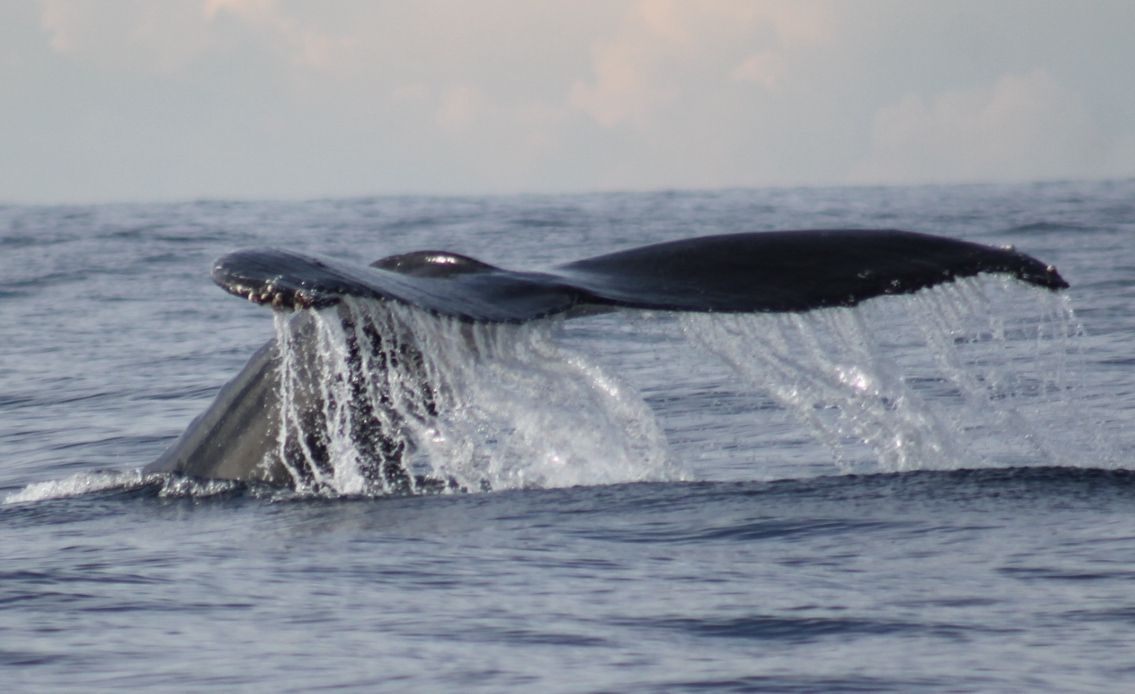June 9 - 15, 2019: Issue 408
Bill Fulton
Living Ocean's Plastic Free July event will be held on July 19th-20th this year and will include a Recycled Fashion Show using some of those great numbers you won't find anywhere else but in Red Cross shops. The team is also keeping an eye on the growing seal colony on Barrenjoey headland and may be incorporating some research into this colony soon.
On Saturday, June 8th, Worlds Ocean Day, members were at North Palm Beach with volunteer citizen scientists and Macquarie university students conducting another microplastics data collection as part of their research studies on our local beaches and waterways in conjunction with the world-leading AUSMAP program.
Living Ocean's Centre for Marine Studies builds upon the expertise of the Whale and Seal Foundation (WSF), which merged into Living Ocean. WSF brought into Living Ocean experienced whale researchers and educators, including several of the most experienced whale rescue specialists in Australia. For many years WSF volunteers trained the NSW National Parks Service, Australian National Parks, Water Police and other organisations in the rescue of stranded and entangled whales.
Bill Fulton - IT Cetacean behaviour and tracking programmer, was one of those WSF members and has spent over 35 years in the study of marine mammals, focusing on humpback whales, especially those that migrate north and south each year.
Whales have been his passion but that was extended to seals and now is bringing in collecting data of microplastics on our beaches as part of Living Ocean's continued focus on a 'No Plastic Please' life.
In 1992 the Government of Canada proposed setting a World Ocean Day during the Earth Summit in Rio de Janeiro. World Oceans Day provides an opportunity to honour, help protect, and conserve the ocean. This week a small insight into a member of Living Ocean who has been honouring and celebrating and working for everything in the ocean for longer than that and has introduced some things that were not here before he did this work.
Where were you born?
In Charters Towers in Queensland. I grew up in the Brisbane area. I remember holidays at Noosa, we used to go there for two or three weeks every year and stay in the camping ground. It was completely undeveloped then; lots of sand-flies, an old General store/Post Office, some fisherman’s huts and that’s all. The river mouth had not been rediverted then, it was just an amazing place. We’d do lots of walking in the National Park, a lot of fishing. I can’t fish now as I haven’t the heart for it anymore.
When I go back now the Noosa National Park is just the same as it ever was, still wonderful.
Did you go to university?
I did, I majored in Physics and Mathematics. I took Russian as a side subject.
Why Russian?
We used to go to film festivals at Uni, we’d pig out on four films per day. One of them was a Russian film with a beautiful girl but I couldn’t understand a single word she was saying. If it’s French or something similar you can understand one or two words but with Russian – nothing. So I thought, ‘I’ve really got to learn this language’. And it turned out to be my best subject.
What was the name of the film?
Сорок первый, romanized as 'Sorok pervyy' – which means ‘The Forty First’. It was a wartime movie.
What did you do after you graduated?
I worked in the University Computer Centre for a year or so. The computer vendor who I’d been working with at the university invited me to join his company, which was a US computer manufacturer. I went straight to America for a year, which was quite an experience for a Brisbane boy from the backwoods. I was based just outside of Boston and worked for them for 25 years and would often go over there, so Boston is like a second home to me. I was just there last month for a holiday.
A beautiful place – lucky you – so many historic buildings and a wonderful culture?
Yes, a very beautiful place and so many historic contexts; it’s where the first shot was fired in the War of Independence, brilliant buildings, great stuff.
How did your interest in what’s going on in the oceans commence?
I’ve always loved the ocean and am an ocean person. It really started in 1983 when my wife Samantha and I went on a whale watch trip in Massachusetts, just south of Boston , from Provincetown. That is where whale watching started. The boat went out and we looked around and there were no whales. The boat stopped and nothing much was happening and then suddenly whales came to the boat, stuck their heads out of the water and I had eye to eye contact. They were humpbacks.
We saw the humpbacks doing the bubble net feeding where they spiral up concentrating the fish and then break the surface with their mouth open, it was quite amazing.
When I came back, a few months later, I was in Sydney on a rainy day, a Saturday I think, and there was a sandwich board placard on the street which said ‘ORRCA – Whale Rescue – Step Inside’. So I stepped inside…and the rest is history I suppose.
They said ‘Bill, we need a newsletter Editor’. So I became the Newsletter Editor and this was before there were any computers – we were duplicating them, licking stamps and putting them in envelopes. Being a computer person I turned it into an electronic process.
Over time I went through different roles in ORRCA, Treasurer and Secretary and eventually President. I started in the mid 1980’s and was there for many years. My wife Samantha, now sadly deceased, is the one who did so much for ORRCA. She was the Research Officer and transformed the organisation into a much more professional group – what it became is due much more to her than to me.
Samantha had been a Research Assistant in Economics at ANU (Australian National University), but she also taught herself Biology and Marine Science and all about Marine mammals and could hold it with the best by the time she was done.
Samantha created so many institutions in ORRCA that continue to today and I’m so thrilled that ORRCA is so successful today. She created the whale cemeteries – this is where we would be doing post-mortems on whales and then transporting them to this secret location whale cemetery in the National Park for the necropsies. Samantha invented the 24 hour hotline that was transferred from, home to home and was one of the main people manning the hotline 24/7 for many years. She absolutely reinvented ORRCA.
And reinvented looking after our whales and seals and all other manner of Marine Mammals too then?
Absolutely. About 15 years later I sat in on an ORRCA AGM and I was thrilled that all the institutions that Samantha had initiated were still part of the organisation.
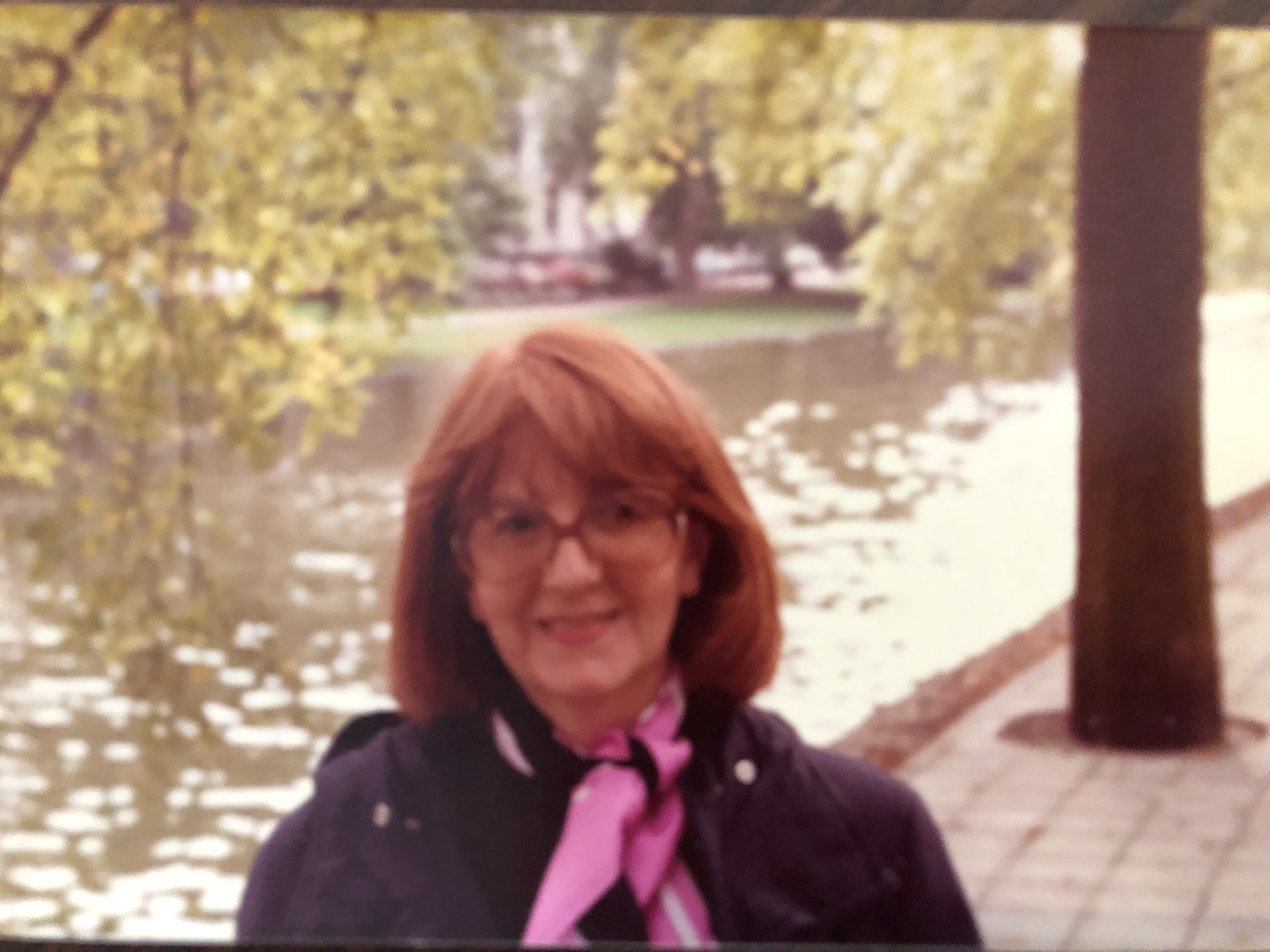
Samantha!
How did your whale research programs commence?
I was with Sam Barripp and we’d go out in Sam’s little 5.3 metre boat studying the humpbacks. We started doing this just prior to leaving ORRCA. Sam is also another ex-President of ORRCA, a brilliant man. ORRCA could not support our research at that stage so Sam and I and some other friends from ORRCA went and formed the Whale and Seal Foundation. ORRCA focuses on rescue whereas the Whale and Seal Foundation was focussed on research. The entire Training Team from ORRCA then became part of the Whale and Seal Foundation – this was the team that trained the National Parks and Wildlife Service in whale rescue and disentanglement.
One of the most satisfying things in my life was being able to institute how to deal with whale disentanglement. In Australia ancient and primitive techniques were being used that were very dangerous to humans and not very effective for the whales. I sat down in Provincetown on the beach with Dr. Charles 'Stormy' Mayo, who was the leading proponent in the US of this new disentanglement method. He was at the Center for Coastal Studies where I took a Summer School once. Stormy explained and showed the whole method to me that had been so successful and relatively safe.
I came back to Australia and taught that to the NSW National Parks and Wildlife Service who then took it up. We were also able to share this with a gentleman from Western Australia, Doug Coughran, a leading light in their National Parks CALM department. Doug took it on board and he trained all the other states and now this method is universally used in Australia.
That continued for many years until the time came when Sam’s boat could no longer be available and we were at a crossroads. We decided to approach Living Ocean as we knew they had a similar interest, objectives and focus and they were very welcoming. We merged the Whale and Seal Foundation with them and became the Research arm of Living Ocean, which they didn’t have before.
How long have you been collecting whale migration data with Living Ocean?
We started that in 2004. I wrote an App in 2003 to support it. That was the idea behind the App – we were going out in this little boat and we couldn’t take all this heavy and cumbersome computer equipment with us. Just at this time little hand held computers became available – a Microsoft pocket PC. So I wrote this App using the GPS and put other stuff in it so it would talk to the depth sounder and the temperature gauge in the boat and record all this automatically and accurately for us.
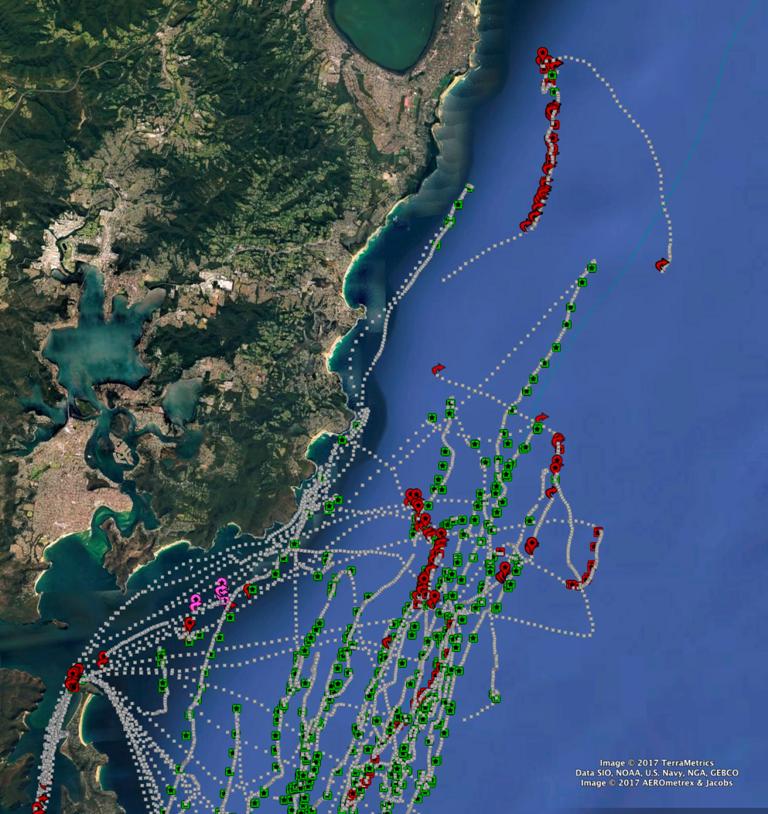
So we now have these tracks on a map for humpbacks. Sam and I had stood there on a headland and wondered – well, where are these whales going? How do they, for instance, follow the seafloor topography – why do some of them go straight across to Copacabana and why do some of them come inshore – what’s going on? So it was just out of pure curiosity that we began following - which is always the best way to get involved in something – follow your curiosity.
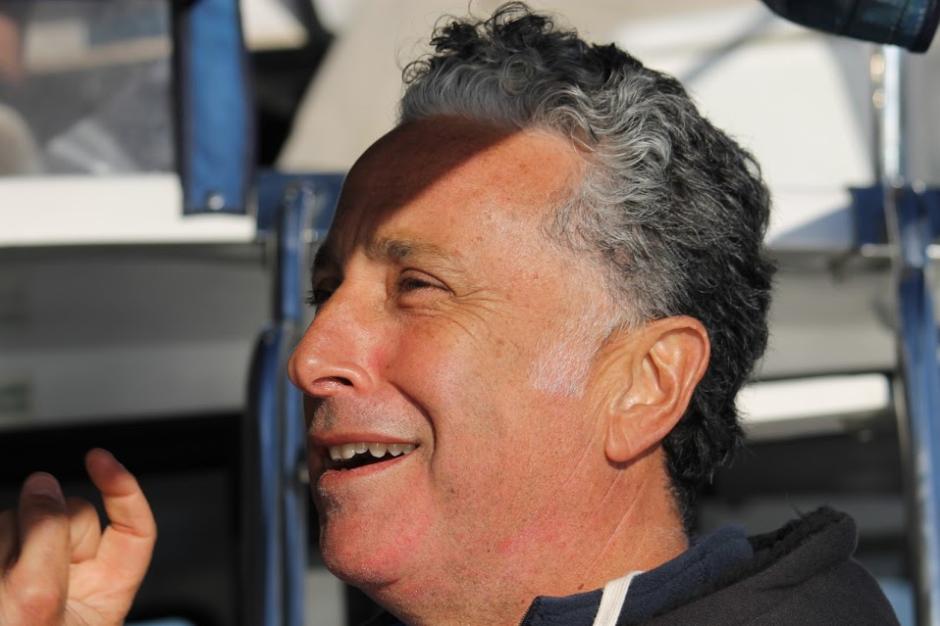
Sam Barripp
So now we have the data from all those years and have been sharing that. There’s this wonderful man, Professor Ian Goodwin, if you ever get the opportunity to go to one of his Talks, don’t miss it. He has been very supportive. The work also attracts others, for instance, this weekend I’m speaking with two recent Marine Scientists graduates who are interested in analysing the data and producing scientific papers.
Living Ocean’s research arm is also now focusing in on collecting data on microplastics?
Yes, this is in conjunction with a group called AUSMAP. This is headed up by the Total Environment Centre with two Academics who are driving it, Michelle Blewitt and Scott Wilson at Macquarie University. This is a world first citizen science project in microplastics that’s has scientific validity. The objective of AUSMAP is to create a heatmap of microplastics in Australia. AUSMAP has trained Living Ocean and we’ve sat an exam and been certified as team leaders for microplastics collection.
Living Ocean’s role is to round up the public, which we do via Facebook, and bring them along to these microplastic events where we collect data. What we want to do is find out how much microplastic is on the beach and what kind is it. We then roll that up onto the database where scientists can study what’s happening. At the moment there is very little information on microplastics so if government goes to scientists and asks ‘what should we do?’ they would shrug their shoulders as they don’t have the information to advise. This is a very very important project.
We select a small strip of beach and first collect the macroplastic – which is pieces of plastic that are above 5mm in size. We then select up to several small squares, scrape off the top level of sand and then sieve these for microplastics, analyse them and then write up what is there and then put this on the database.
North Palm Beach Living Ocean AUSMAP Data Collection June 8th, 2019 - Worlds Ocean Day
North Palm Beach Living Ocean AUSMAP Data Collection June 8th, 2019 - Worlds Ocean Day
Is this now full-time work for you Bill?
No, it’s certainly an avocation though. I’m retired but am now working harder than I ever did.
At present I’m working full-time on developing an iPhone app or mobile phone App for Behavioural Scientists who are studying animal behaviour. So obviously that grew out of that App I wrote in 1983 but it is totally general now and so can be used for any animal – a mountain gorilla or any other animal. It’s integrating the observation of behaviour and location and environment. So it will record the different behaviours the animal is doing, record their tracks, and the environment they’re in. So that all get’s integrated and comes up on a big map.
I think you may be one of those quiet geniuses Bill…
No – it’s what a famous person once said; 99% perspiration and 1% inspiration.
What is your favourite place in Pittwater?
That would be on Barrenjoey Headland where there is at present a developing seal colony. This is a very interesting place to watch.
What is your ‘motto for life’ or a favourite phrase you try to live by?
Nothing in life is to be feared, it is only to be understood. – Marie Curie.
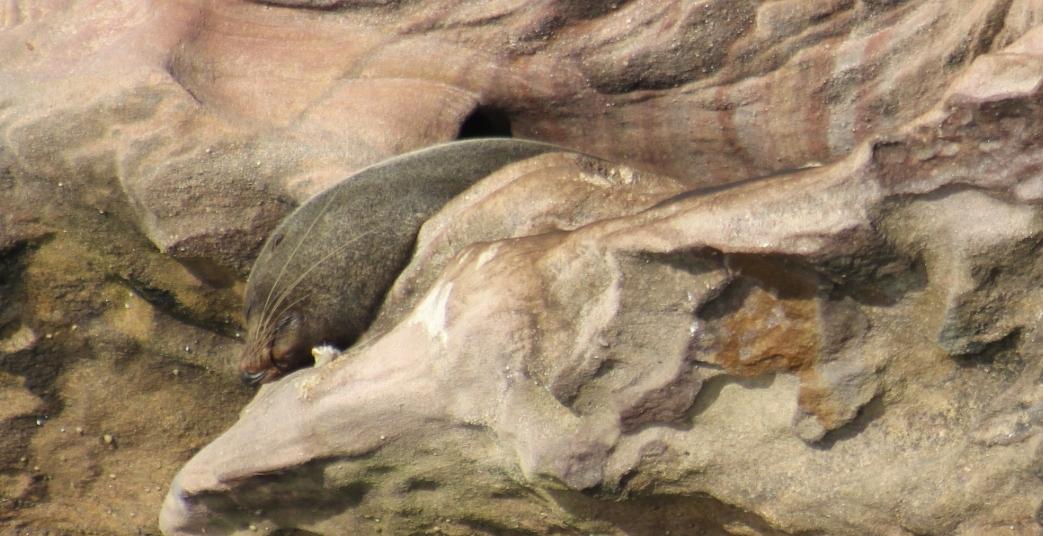
Southern Fur Seal Arctocephalus forsteri, or New Zealand Fur Seal at Barrenjoey - napping in the afternoon sun.
Notes
The Center for Coastal Studies has pioneered efforts to disentangle large free-swimming whales in the open ocean since 1984, when Dr. Stormy Mayo and David Mattila conducted the first rescue of a free-swimming whale named Ibis in Provincetown Harbor on Thanksgiving Day. Since then, the Center’s Marine Animal Entanglement Response (MAER) team has gone on disentangle more than 200 whales and other marine animals and has partnered with dozens of organisations to train and equip responders on five continents and nearly 30 countries.
LIVING OCEAN MICROPLASTICS RESEARCH
Plastic does not ‘break down’, it breaks up in a few short years into miniscule pieces called microplastic, washing into the ocean where it causes havoc with the entire food chain, ending up eventually in humans as well. As a threat to life on the planet, it’s comparable to global warming. Little is known about the best way to counter this, and the answer lies in research.
Living Ocean citizen science volunteers are conducting fascinating research studies on our local beaches and waterways in conjunction with the world-leading AUSMAP program. We’re always looking for new volunteers. Contact us on our Facebook page and leave a message
A typical survey lasts 3 hours and we follow a strict peer review guideline to identify and log samples from a random sample along a high tide wash zone on beaches and waterways. As mentioned we are concentrating on specific Northern Beaches and Pittwater sites.
At each location we survey an area 5m x 150m along the last high tide line. Within this area we sample 3 small areas randomly chosen areas.
We also log the macro plastic and waste within this area and submit to the Tangaroa Marine debris database for comparison purposes.
Volunteers are always welcome.
